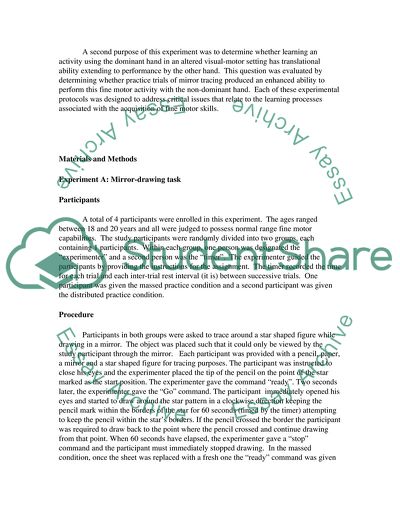Cite this document
(Learning, Performance and Transfer in a Mirror Drawing Task Case Study, n.d.)
Learning, Performance and Transfer in a Mirror Drawing Task Case Study. Retrieved from https://studentshare.org/education/1548521-laboratory-4-report-hmst-2530
Learning, Performance and Transfer in a Mirror Drawing Task Case Study. Retrieved from https://studentshare.org/education/1548521-laboratory-4-report-hmst-2530
(Learning, Performance and Transfer in a Mirror Drawing Task Case Study)
Learning, Performance and Transfer in a Mirror Drawing Task Case Study. https://studentshare.org/education/1548521-laboratory-4-report-hmst-2530.
Learning, Performance and Transfer in a Mirror Drawing Task Case Study. https://studentshare.org/education/1548521-laboratory-4-report-hmst-2530.
“Learning, Performance and Transfer in a Mirror Drawing Task Case Study”, n.d. https://studentshare.org/education/1548521-laboratory-4-report-hmst-2530.


